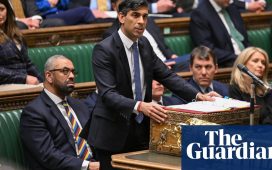The UK has faced its darkest week in the fight against coronavirus so far.
After the Prime Minister became one of the statistics to reach intensive care, the total death toll has already surpassed 7,000.
On Wednesday the UK’s death toll overtook Italy’s worst day higher than Italy’s worst day when 919 people died.
Yesterday 891 died and over the Easter weekend it is feared it could rise over a 1,000 a day.
And today Chief Scientific Adviser Sir Patrick Vallance warned deaths will continue to increase for two weeks after the number of patients admitted to intensive care reaches its peak
We examine the government’s handling of the coronavirus crisis so far.
Leadership

Boris Johnson faced criticism at the outset of the pandemic for not taking it seriously enough despite warning signs as early as January from Wuhan, China.
In fact the Prime Minister did not attend a COBRA meeting until the UK had seen three deaths on 8th March – and after the government had held four.
Throughout there have been big questions about the message he has personally given out.
He seemed to boast about shaking hands after a hospital visit telling a press conference on 3rd March: “I was at a hospital where there were a few coronavirus patients and I shook hands with everybody”.
He also failed to rebuke his own father who is 79 who insisted he would still be going to the pub.
And he suggested that he would “see” his mum on Mother’s Day which his aides later clarified as over video call but by then it was too late.
Curtailing the public’s freedom is hard for most politicians but it seemed particularly hard for Mr Johnson in a way that, for example, Theresa May would not have struggled.
But Mr Johnson should be given credit for listening to the scientists and putting their advice above his personal instincts.
At a press conference whose message was to discourage people from being outside – apart from to exercise – after a sunny weekend the PM couldn’t help but say:: “I want, of course I do, people to be able to go to the parks, open spaces and enjoy themselves.
As the Prime Minister fell ill with coronavirus he insisted he could still work giving the impression the virus was not as serious as many doctors wanted the public to believe.
When his condition worsened and he was forced to hospital – and then intensive care – there seemed to be a power vacuum at the heart of government.
While Foreign Secretary and First Secretary of State Dominic Raab is technically in charge, he was an unfamiliar figure for much of the general public and does not have the exact same powers as the Prime Minister himself.
Schools

Initially schools stayed open while the rest of the population was told to stay at home if they could.
But schools were already seeing large numbers of worried parents keeping their children at home and unions said they were struggling to stay open due to staff illness.
This was another case of confused messaging.
Although the scientists were clear that children were at minimal risk from the virus, it did not seem to make sense to the public.
On 16th March the Government’s chief scientist Sir Patrick Vallance said:
“At some point, as we’ve said, it may be necessary to think about things like school closures. But those things, again, need to be done at the right time in the right way, at the right stage of the outbreak,” he said at a news conference.”
At that stage more than 600,000 parents had signed a petition calling for them to close.
When they closed on 20th March there were a number of unanswered questions for schools such as how exams would work, if the national curriculum still applied and how schools should operate when taking care of the children of key workers.
Having rather publicly ummed and ahed about the timing of the closure many in the sector felt those decisions should have already been made.
Whether they will reopen this academic year remains unclear providing more uncertainty.
Communication

The government’s communication strategy has been confused.
It has been unclear for the general public how serious the outbreak in the UK was going to be making it impossible for families to prepare and leading to panic buying.
Until March 12, the risk level, set by the government’s top medical advisers on the recommendation of the scientists, remained at “moderate,”
suggesting only the possibility of a wider outbreak despite.
Ministers allowed reports that they were focussed on trying to create herd immunity which have been rigorously denied to be accepted by the public leading to outrage and a loss of trust in political leaders.
When the government finally brought in lockdown they resisted using the term and left people unsure of what they were and weren’t allowed to do leading to confusion and allowing overzealous police forces to take matters into their own hands.
The NHS

The pandemic hit after more than a decade of austerity wrought on public services.
Although the NHS was protected from a lot of that it still saw its budgets increase by a much smaller amount than previous years – 1% under the coalition and then moving to 3.5% over inflation.
Public sector pay cuts and then freeze have had devastating impact on staff recruitment – especially when it comes to nursing.
In January the NHS had 100,000 vacancies including about 40,000 nurse posts and nearly 10,000 doctor roles.
There have also been cuts to critical care beds over a number of years.
And last year the AndE waiting times hit their worst ever.
This coupled with the problems with social care which lead to so called bed blocking.
Timing of lockdown and lack of exit strategy

This has been a big bone of contention with numerous experts highly critical of what they see as the government’s late decision to curb freedoms to protect the UK.
But many of the main scientists involved in the government’s response worried that Brits would simply not agree to measures to restrict their movement.
The police do not often play that role. It is far more common even in EU countries for the police to stop citizens and ask them for ID than the UK where that is, on the whole, not their role.
When it was finally announced the Prime Minister promised it would be for three weeks with a review at that point.
But after he was taken to hospital on Sunday it became less clear who was in charge of making that decision.
In contrast to the Westminster’s government’s need-to-know approach both First Ministers of Wales and Scotland have been more open on the advice that they are working from.
On Wednesday Mark Drakeford announced that Wales would remain in lockdown over the next week while UK ministers refused to confirm the decision.
Financial package

The newly-appointed Chancellor Rishi Sunak has received widespread praise for his financial packages – generous even by European standards where workers’ rights are much more entrenched.
First was a business bailout of more than £350bn with a mixture of grants and loan guarantees.
And the government has offered to pay 80% of the wages of workers who are “furloughed” during the crisis up to £2,500 a month.
But for many the support for workers came too late.
While business was the first priority, support for the self employed was delayed with tubes, buses and trains busy with labourers, agency employed cleaners and others who couldn’t afford not to work.
On 26 March he unveiled a package for the self-employed.
The scheme will pay a cash grant worth 80%of average monthly trading profit over the past three years capped at £2,500 a month, benefiting 95% of people who receive the majority of their income from self employment.
And because of some of the holes in the package – and built-in delays some self employed workers and others are having to apply for benefits.
More than 1.2million people have applied for Universal Credit in the past three weeks after the Government increased the allowance by £1,000 and told households struggling due to coronavirus to apply for financial aid.
Universal Credit itself has a built in five week delay – a long-standing criticism of the system which ministers have refused to axe even under the current circumstance.
Economists think a recession is inevitable and the World Trade Organisation has warned that the fallout from coronavirus “may well be the deepest economic recession or downturn of our lifetimes”.
Testing

The UK has lagged behind other countries when it comes to testing.
Germany, for example, has been streets ahead carrying out and is currently able to carry out 500,000 a week.
On Tuesday the Chief Scientific Advisor Chris Whitty admitted: “We all know that Germany got ahead in terms of its ability to do testing for the virus, and there’s a lot to learn from that.”
Boris Johnson announced on 18 March that coronavirus testing would increase to 25,000 tests a day, with NHS frontline staff being among the first to benefit.
The next day he talked about eventually getting to 250,000 which would include antibody tests to see who had had the virus and was now immune.
That figure has since been dropped.
At the start of April, testing was well short of the interim goal of 10,000 tests a day, with only 2,000 of about half a million NHS frontline workers having been tested.
Scores of NHS staff have been self-isolating without knowing if it is safe for them to return to work because they haven’t been tested.
On Thursday, the health secretary, Matt Hancock, set out a goal of moving from 10,000 tests a day to 100,000 by the end of April.
These would include antigen tests that show whether people are currently suffering from Covid-19, as well as antibody tests to see whether people have had the infection and recovered.
But so far the government still doesn’t have an antibody test that works.
On March 25 they announced the UK had ordered more than 4 million of these tests, which can be as simple as finger-prick devices.
They said the kits could have been made available on Amazon.com and at pharmacies.
But none of those tests worked and the UK is now focussed on developing its own rather than buying one off the shelf.
PPE

The government has insisted that the UK has enough protective equipment for all those who need it – although they admit some issues with delivering it to the places where it’s needed.
But the experience of nurses and doctors on the frontline has not borne that out.
The Doctors’ Association UK (DAUK) Based on 500 reports so far from 193 hospital trusts and GP practices say that 72% of doctors cannot get hold of an FFP3 mask when they need one, 77% report shortages of long-sleeved gowns and 43% cannot always use a visor or goggles when they need them.
Protective kit is still in short supply for doctors undertaking “aerosol generating procedures” on Covid-19 patients, such as intubating them, where potentially dangerous droplets are expelled from their mouths.
Almost half (49%) of medics performing such procedures cannot always access a gown, 42% an FFP3 mask and 20% proper eye protection, DAUK found.
However, the Royal College of Physicians (RCP) have said a combination of revised PPE guidance issued last week by Public Health England, and the NHS drive to get millions more pieces of kit to the frontline, had made a big impact on the shortages and helped allay staff’s fears.













